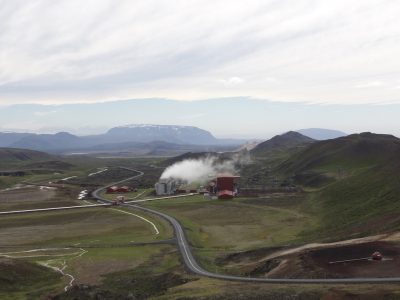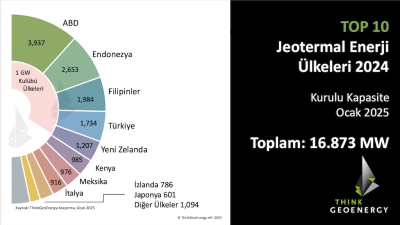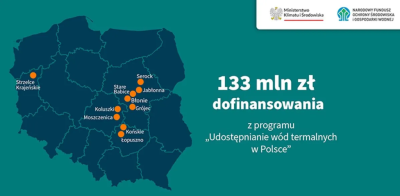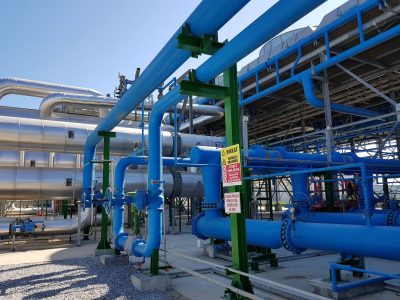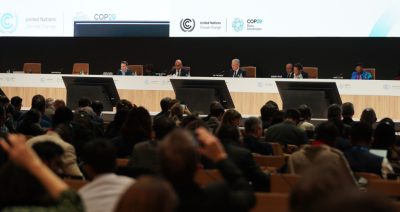Geothermal as part of the G20 countries’ renewable energy commitment
The G20 countries, their renewable energy commitment and what role geothermal energy is playing or could play - a reminder ahead of the Climate Change Talks in Paris this year.
Last week, “Energy ministers from the G20 countries and heads of international organizations affirmed their commitment to renewable energy at the first-ever G20 Energy Ministers Meeting in Istanbul”, so IRENA in a press release.
The Group of Twenty is “an international forum for the governments and central bank governors from 20 major economies. The members are 19 individual countries along with the European Union.
The members are Argentina, Australia, Brazil, Canada, China, France, Germany, India, Indonesia, Italy, Japan, South Korea, Mexico, Russia, Saudi Arabia, South Africa, Turkey, the United Kingdom and the United States—along with the European Union (EU).
“The high-level participants endorsed an 11-point Communiqué, including the adoption of a renewable energy toolkit, which provides options for G20 countries to take a long-term, integrated and sustainable approach towards enhanced deployment of renewable energy. This year, under the Turkish presidency, marks the first time renewable energy is on the G20 agenda.
“The G20 countries hold 75 per cent of total global deployment potential and 70 per cent of total global investment potential for renewable energy between now and 2030,” said IRENA Director-General Adnan Z. Amin. “With this tremendous market opportunity before them, concerted and coordinated action undertaken by G20 countries to advance renewable energy can really move the needle on global deployment as we transition to a clean energy future.”
So lets look at some of the G20 countries are and their track record on geothermal.
Argentina actually was home to the first geothermal plant in South America, and there are some projects looking at bringing the country back on the map.
Australia, while having been a disaster for geothermal development, last but not least due to the complete lack of support for renewables by the current government, a recent prime minister change creates a slight hope things will at least get a bit easier and will see some support returning to geothermal ambitions. But if this will help to turn things around for the companies that have given up is more than unclear.
Brazil, there are no known geothermal resources or project.
Canada, is a country with similar potential to the Western United States in the province of British Columbia, parts of Alberta and Saskatchewan. As a country with these resources and technology know-how from the oil and gas sector, it is a shame that there has been little to no development and no government support to speak of. But there are also some existing direct use applications for heating in the eastern part of the country.
China has some great resources in Tibet, where its only geothermal power plants are operating. But the country has some ambitious projects ongoing for geothermal district heating and there seems to be strong political support for extended work on that.
France is seeing an increased interest in geothermal. With one of the largest geothermal district heating systems in the capital of Paris, there are several heating projects in other parts of the country, but also some power generation projects. The country is also seeing some further increase in activities in its territories of Guadeloupe in the Caribbean and its industry players are looking at projects world wide.
Germany definitely has been the somewhat different geothermal player. With lower temperature resources than other countries, the country has helped push development with ground breaking guaranteed feed-in-tariffs, that have helped push development of both power and heat projects and has helped develop an industry that is now also working internationally.
India continues to be quite ambitious about geothermal development, but apart from two to three projects having been mentioned over the years not much news are available on their status or exactly how much of the potential the country actually has.
Indonesia is the country with the largest geothermal resources and while development has been stalled over years due to uncertainties about regulations, investment etc, things seem to shape up for development at great levels that will make Indonesia the key country for geothermal development.
Italy, the home of geothermal, continues to see some geothermal development. While there are some smaller scale private projects, things still seem to be driven mostly by the large power company Enel and its renewable energy arm, Enel Green Power. The latter is also very active internationally with projects in Latin America and North America. Italian turbine producers are also playing a major role on binary plants.
Japan has unfortunately seen no real revival of its geothermal sector, following the hopes for geothermal after the Fukushima disaster and the following step away from nuclear power. But so far only small scale projects are in the plans, but feed-in-tariffs and involvement of some of the big power firms are creating some hope. Japanese turbine producers play a major role in development world-wide.
South Korea has some geothermal resources, and while there have been some ambitions we are not aware of some ongoing development. Potential seems to be more on the EGS side than anything else. There are though several hot spring areas.
Mexico, being one of the major geothermal countries, sees a bit of a revival. With a recently implemented energy market reform, there is an increased development effort by its state utility CFE, but also an opening for and interest by private players. So there are interesting times ahead.
Russia actually has some operating geothermal plants in Kamchatka in the far east of the country. We are not aware of any major new development plans. There has been some interest in geothermal heating.
Saudi Arabia has no real resources. There had been though some ambitions in relation to research and education and some investment activity internationally, but nothing within its borders.
South Africa has limited geothermal resources, but could potentially be interesting with concrete incentives. How likely this will come is uncertain.
Turkey is the absolute new comer on the geothermal scene. Having increased its geothermal power generation capacity from 30 MW in 2008 to today around 575 MW (status as of September 2015), the country has seen some incredible growth. And this is not the end. There are still big plans and a large number of projects making this one of the “hottest” countries for geothermal development. Several Turkish investors are looking at geothermal investments internationally, e.g. in Indonesia and Africa.
The UK has seem some development interest for EGS projects, but their status seems to be somewhat uncertain. But there are several interesting geothermal heating projects ongoing that could promise some further development.
The U.S. continue to be the leading nation when it comes to geothermal power generation capacity, but with the development activities in South East Asia, and limited development in the country, it will soon loose its no. 1 position among geothermal nations. But this could change and with the experience of the U.S. geothermal sector, companies work internationally and development in the country could pick up again.
In the European Union, there are several other countries with geothermal power generation ambitions, but mostly countries like Greece, Hungary, Slovakia, Poland, the Netherlands and others are either utilising geothermal for heating or are looking into it.
So overall, geothermal is present in most of the G20 countries and could play a role to help those countries to reach their renewable energy targets.
Source: IRENA








